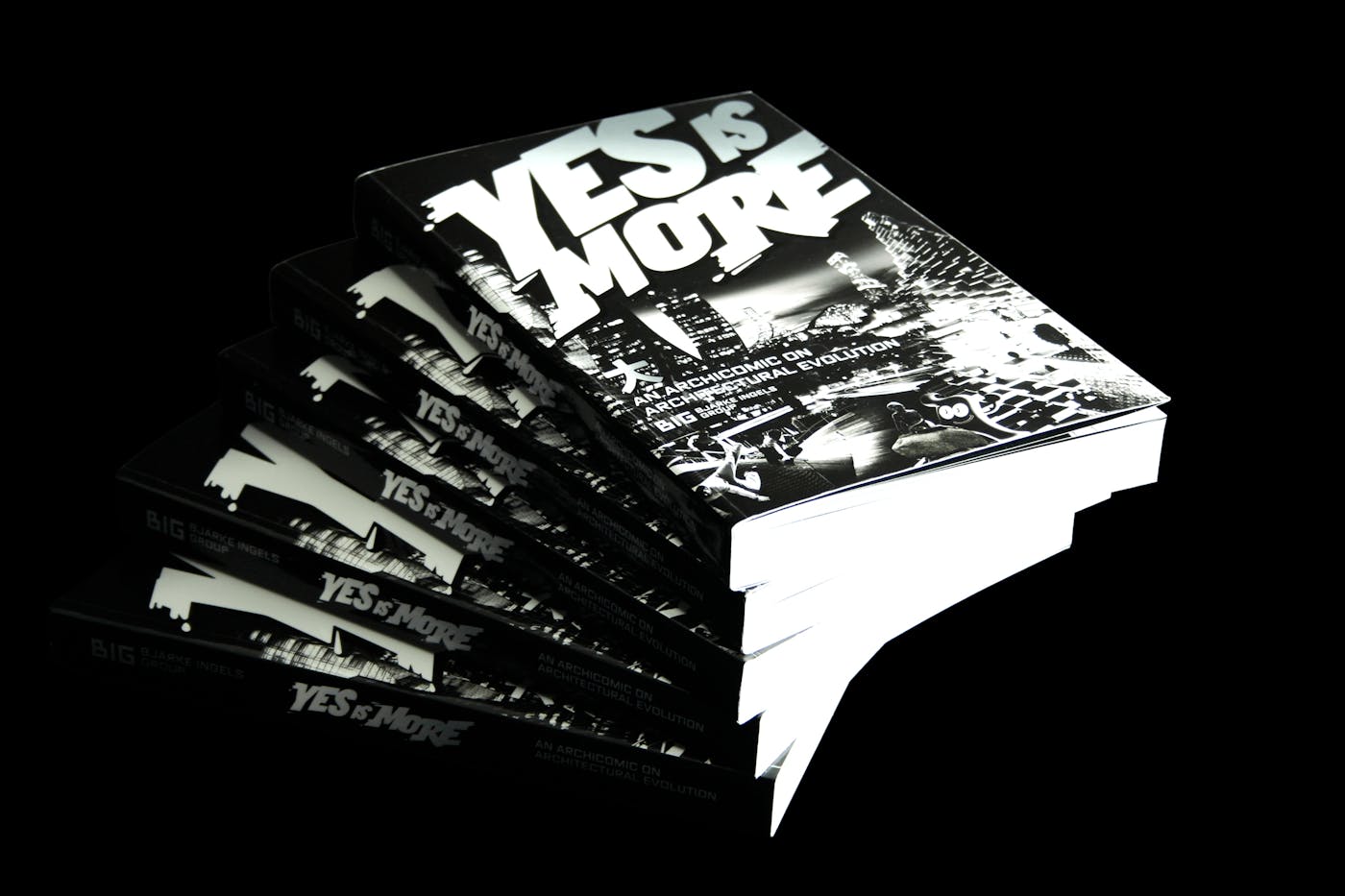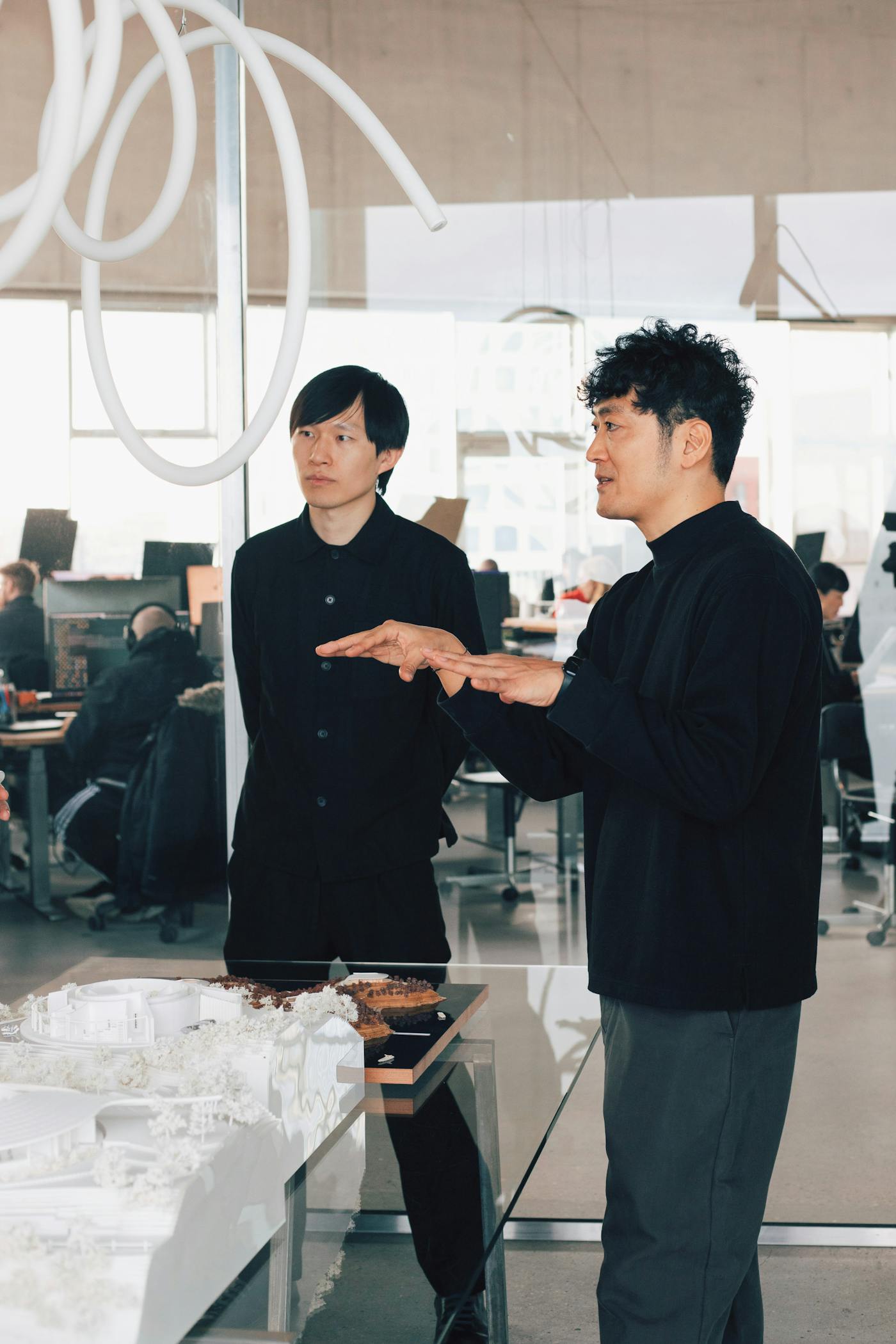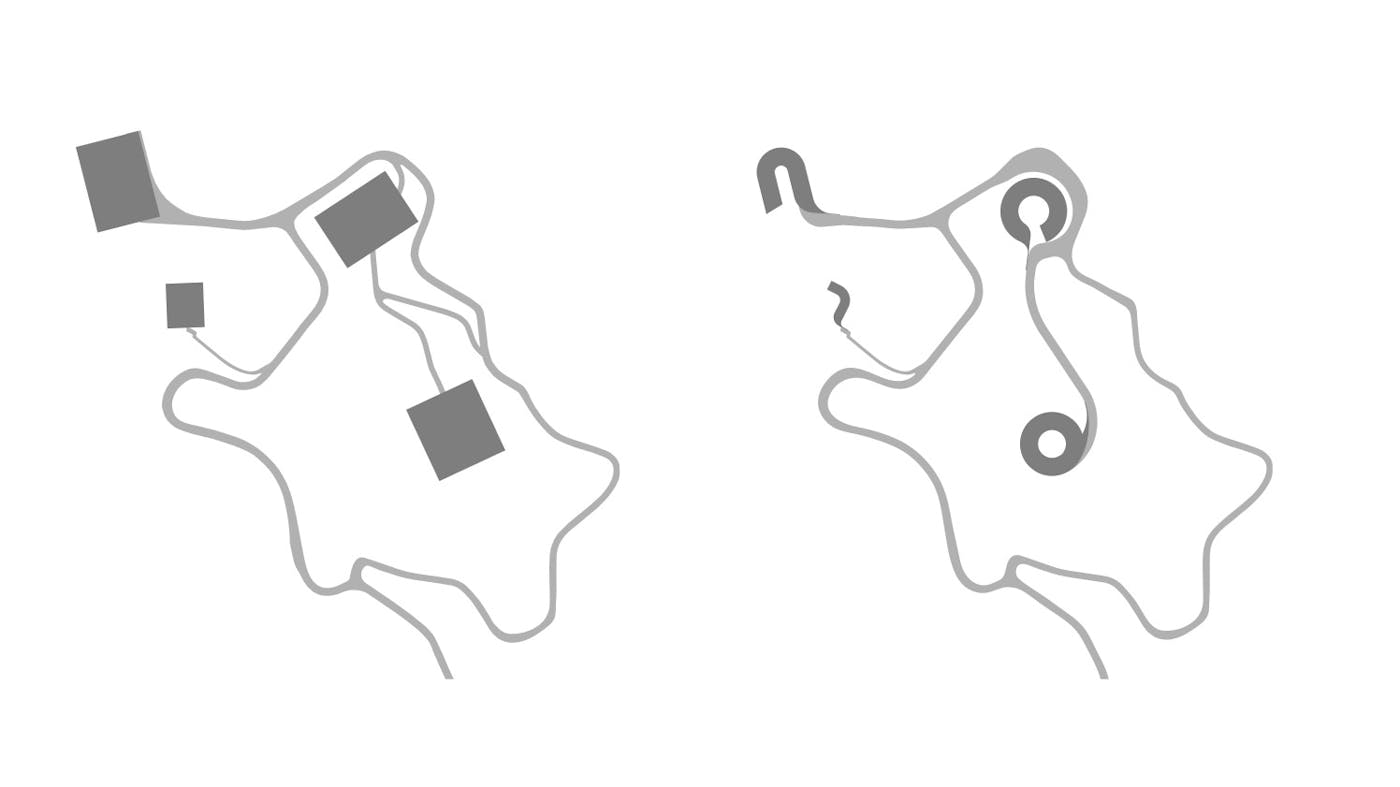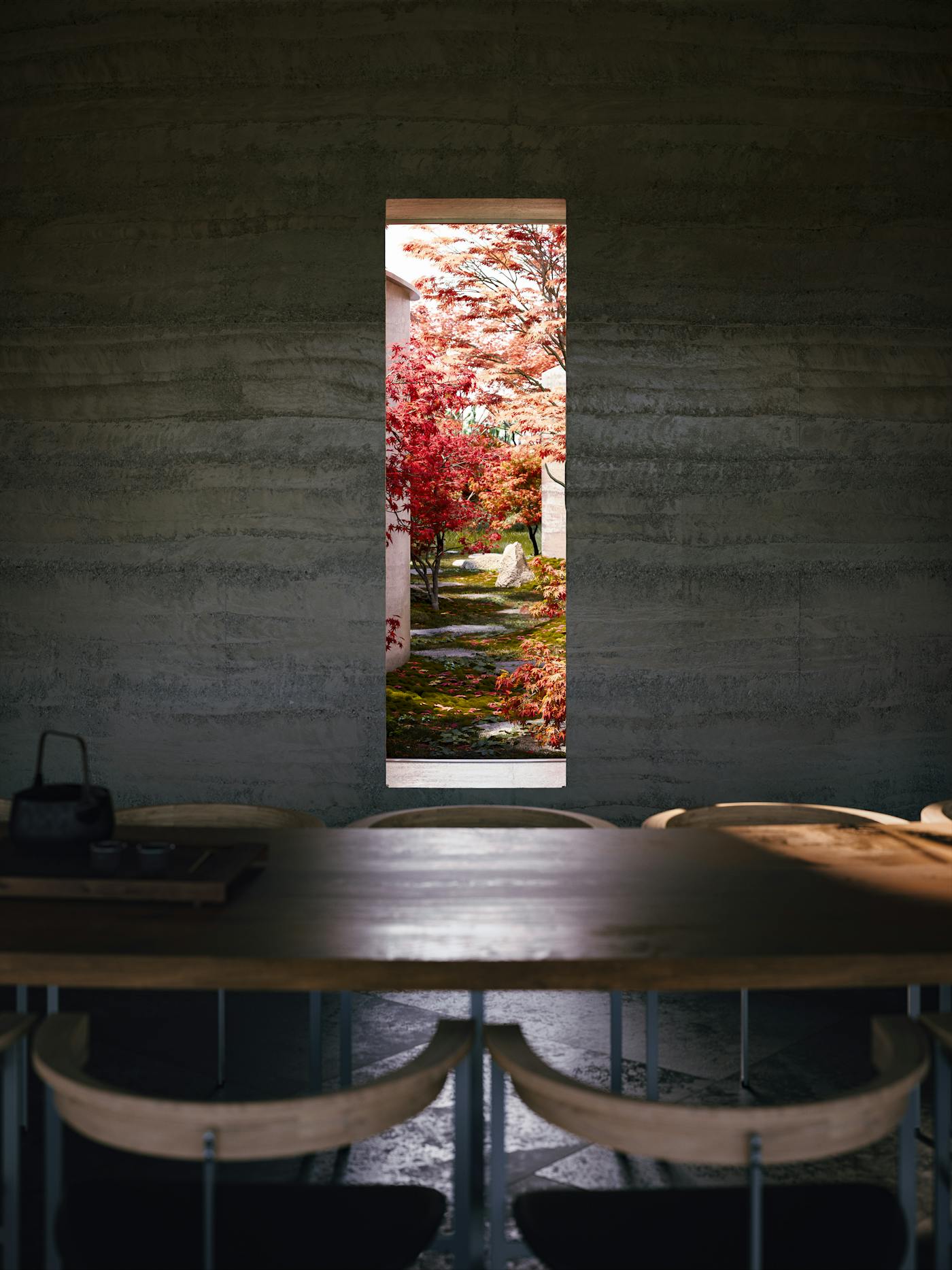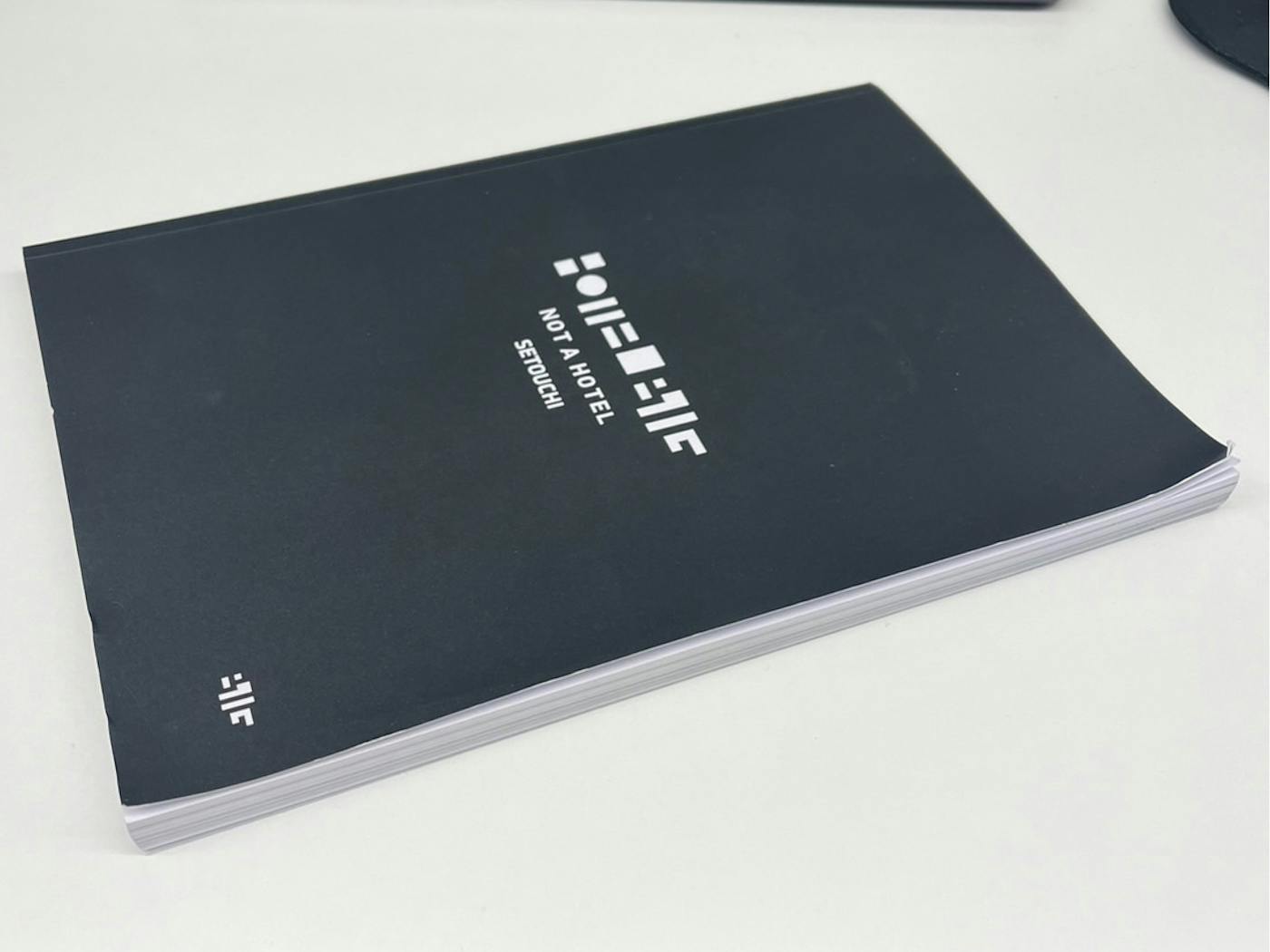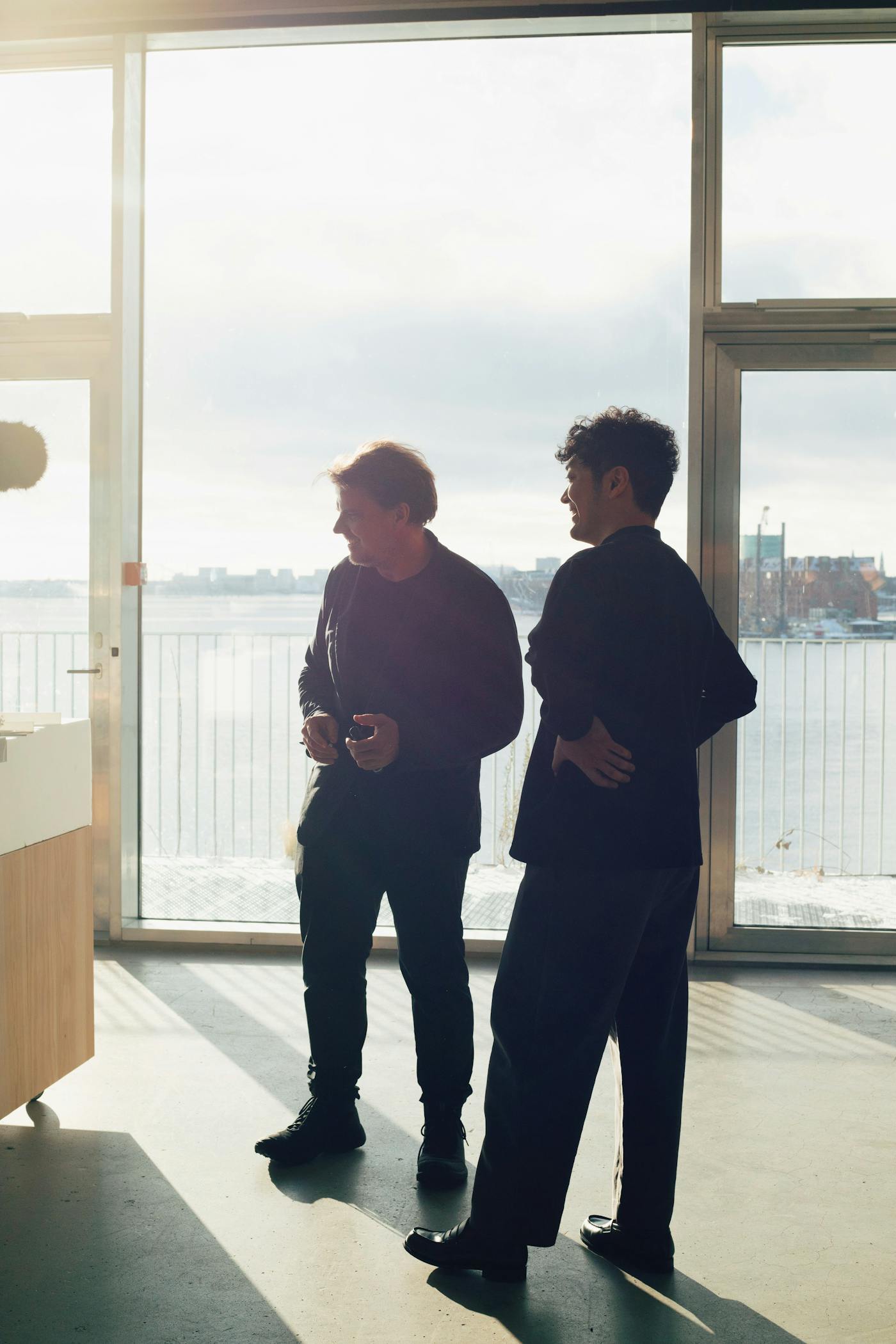
Vol.01
Minimizing Intervention in Nature One-Stroke Architecture
Interview with Ryohei Koike from BIG
BIG (Bjarke Ingels Group) is embarking on its first project in Japan with NOT A HOTEL SETOUCHI. Behind its realization lies the key presence of Japanese architect Ryohei Koike. After graduating from university, Ryohei joined BIG as an intern and now works in their London office. We sat down with Ryohei to explore the swift development of the project, which progressed remarkably within just one year, as well as his insights into Bjarke as a person.
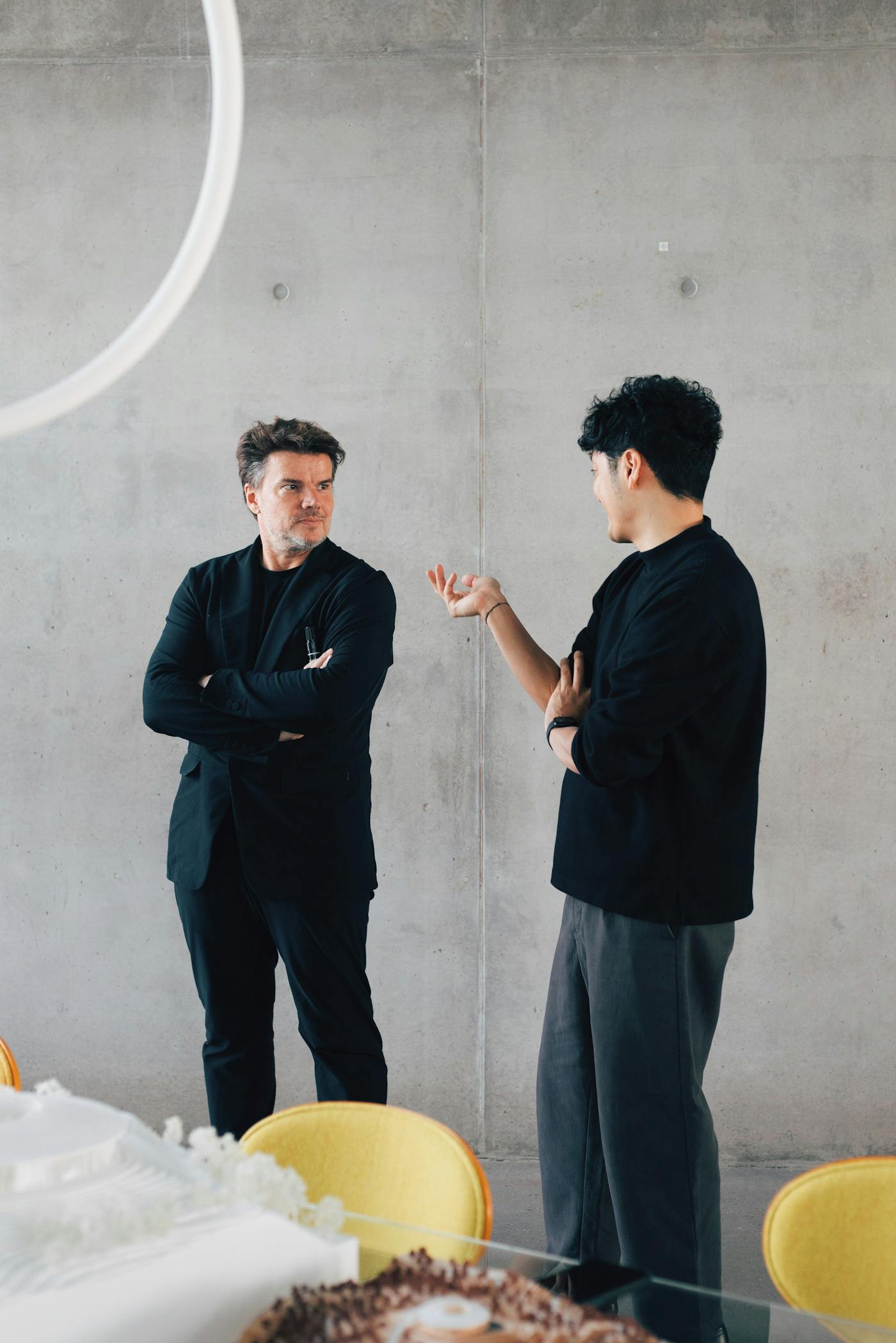
BIG has around 700 staff members across offices worldwide and employs a few Japanese architects, one of whom is Ryohei Koike. Ryohei moved to the United States to study architecture and joined BIG's Copenhagen office right after graduating in 2010. Since 2018, he has been working in BIG’s London office. "I moved to the United States right after graduating high school and continued working abroad, so I always wanted to take on a project in Japan someday. Sagishima is completely different from any site I’ve worked on before; it’s like Japan's original landscape. When I visited the site, I was excited to see the rocky cliffs, rich vegetation, sandy beaches, and even a statue of Buddha." Ryohei's enthusiasm was instrumental in realizing his long-cherished dream of working on a project in Japan. "I was intrigued by NOT A HOTEL after hearing about the company through the media, and I talked to Bjarke about them. In the summer of 2022, I reached out to NOT A HOTEL via their inquiry form. They responded right away. The CEO, Shinji Hamauzu, told me that he initially thought it was a prank since the message was in Japanese, even though it came from BIG (laughs)." The team at BIG's New York office was familiar with Japan after handling the Woven City project that was first announced in 2020 in Susono City, Shizuoka Prefecture. Therefore, it was also highly likely that NOT A HOTEL SETOUCHI would become a BIG New York project. However, Bjarke respected Ryohei's proactiveness and ambition and decided that as he initiated the project, he should handle it in London. "I was very motivated and genuinely delighted. It was a similar feeling to being a teenager again and turning up the volume to max on a music track that you loved — even if it meant your eardrums might burst. I was determined to give it my all, even if it meant putting everything on the line." Before delving into how Ryohei developed the SETOUCHI project, let's explore his path to joining BIG.
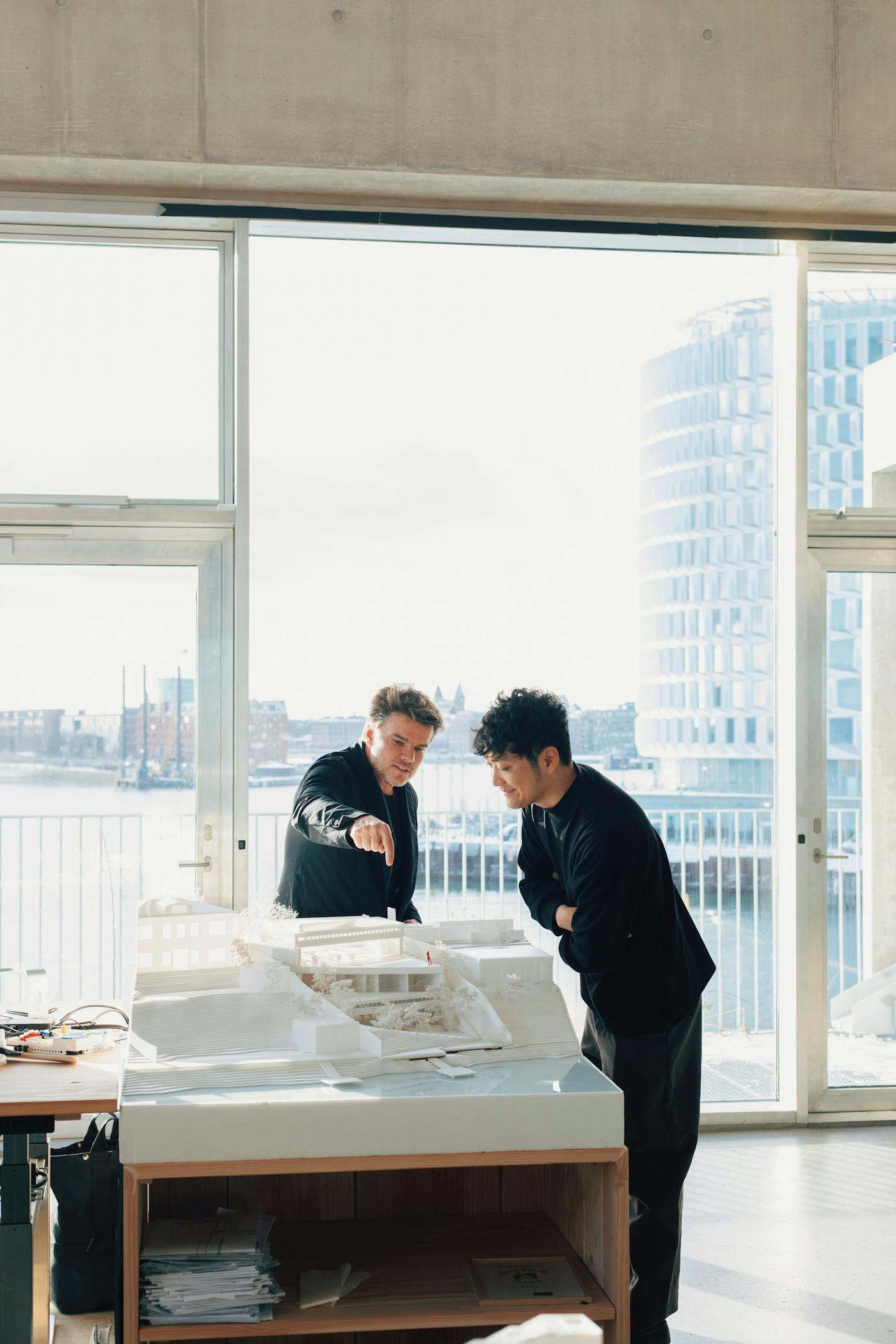
Finding Answers in Architectural Design with "YES IS MORE"
"I transferred from the Illinois Institute of Technology to SCI-Arc (Southern California Institute of Architecture) in Los Angeles. SCI-Arc is a unique school founded by avant-garde thinkers looking to innovate beyond traditional architectural education. It's only recently that the school started offering degrees. Instead of teaching conventional architectural theories and methodologies, we focused on parametric and script-based design, tackling unusual, fluid architectural assignments. Both professors and students were highly artistic. However, the fundamental reasons behind these designs were rarely discussed, which confused me about architecture." As graduation approached, Ryohei experienced a turning point when he discovered Bjarke Ingels' first book, "YES IS MORE." "The book uses a comic format to illustrate how to approach clients, sites, problems, and solutions — in other words, how to design. For the first time, it made sense to me why certain architectural designs took their shapes." He sent his portfolio to BIG upon graduation and was quickly invited to join them. He headed to Copenhagen without hesitation. Despite starting as an intern, he was immediately entrusted with significant responsibilities as a member of the team. "Around 2010, when I joined, BIG had about 60 staff members. Because of the small team size, interns often worked directly under architects on important projects. My skill in rendering put me in high demand, with project leaders squeezing me into their schedules (laughs). Transitioning from intern to architect, I was given charge of projects like the renovation of a hotel in Denmark and worked on the LEGO House from the competition phase through to detailed design." BIG's London office, which opened in 2016 as a project office, underwent a significant expansion in 2018. At that time, Ryohei became a project leader and moved to the UK capital. Although he has since become an associate, his primary roles and responsibilities have remained unchanged.
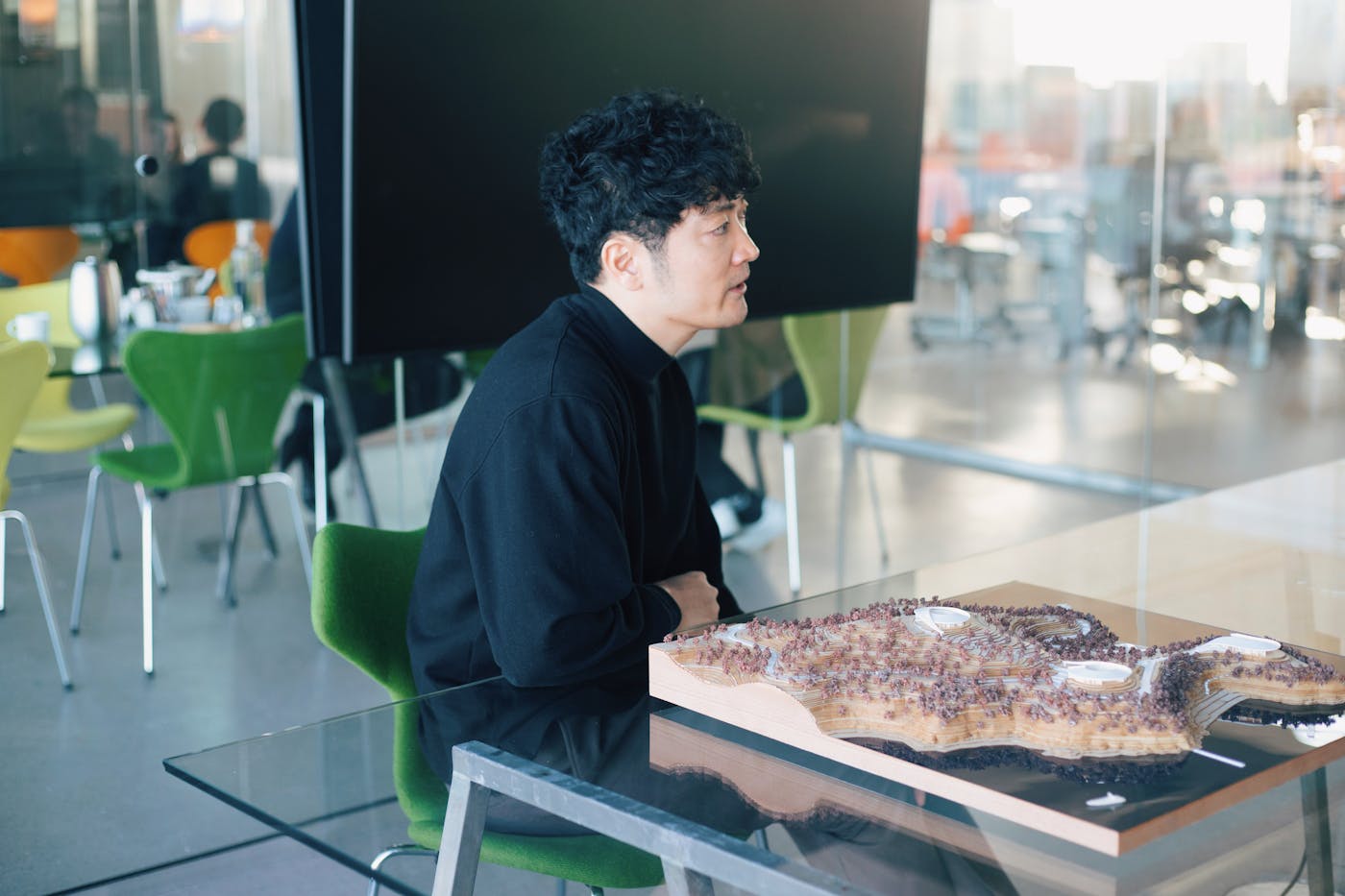
Information-Driven "Aikido Architecture"
When you think of BIG, what kind of architecture comes to mind? Perhaps it's the CopenHill in Denmark, a waste-to-energy plant with a ski slope on top, or the LEGO Brand House that looks like stacked LEGO bricks, or the huge residential complexes in New York and Amsterdam. Looking at BIG's past projects scattered around the world, you might get the impression that their designs are unique and unconventional, breaking the norms. However, the NOT A HOTEL SETOUCHI plans show a different approach that harmonizes with the surrounding landscape and respects the island. So, what exactly characterizes BIG's architectural style? On his website "Bjarke Ingels Goroku" (Bjarke Ingels Speaks), Ryohei states "Architects with a strong architectural style are like karate practitioners. They hone their specific techniques to perfection and apply their signature moves to any situation (site, design conditions). BIG, on the other hand, aims for an Aikido-like approach to architecture. It's about having no fixed style and using the unique qualities and challenges of the site to enhance the design." "I call it 'Aikido Architecture,' but it's really information-driven design that naturally emerges from thorough research. It's not about Bjarke or anyone at BIG designing based on personal preferences. Instead, we conduct site investigations, uncover the location's history, and understand the client's needs — whether it's a hotel, residence, or museum. These elements guide us in formulating the right questions or design challenges. If we frame the question correctly, the design follows as the solution. Unlike architects with a distinctive style recognizable anywhere in Dubai or France, BIG's designs are the optimal solutions derived from various factors."
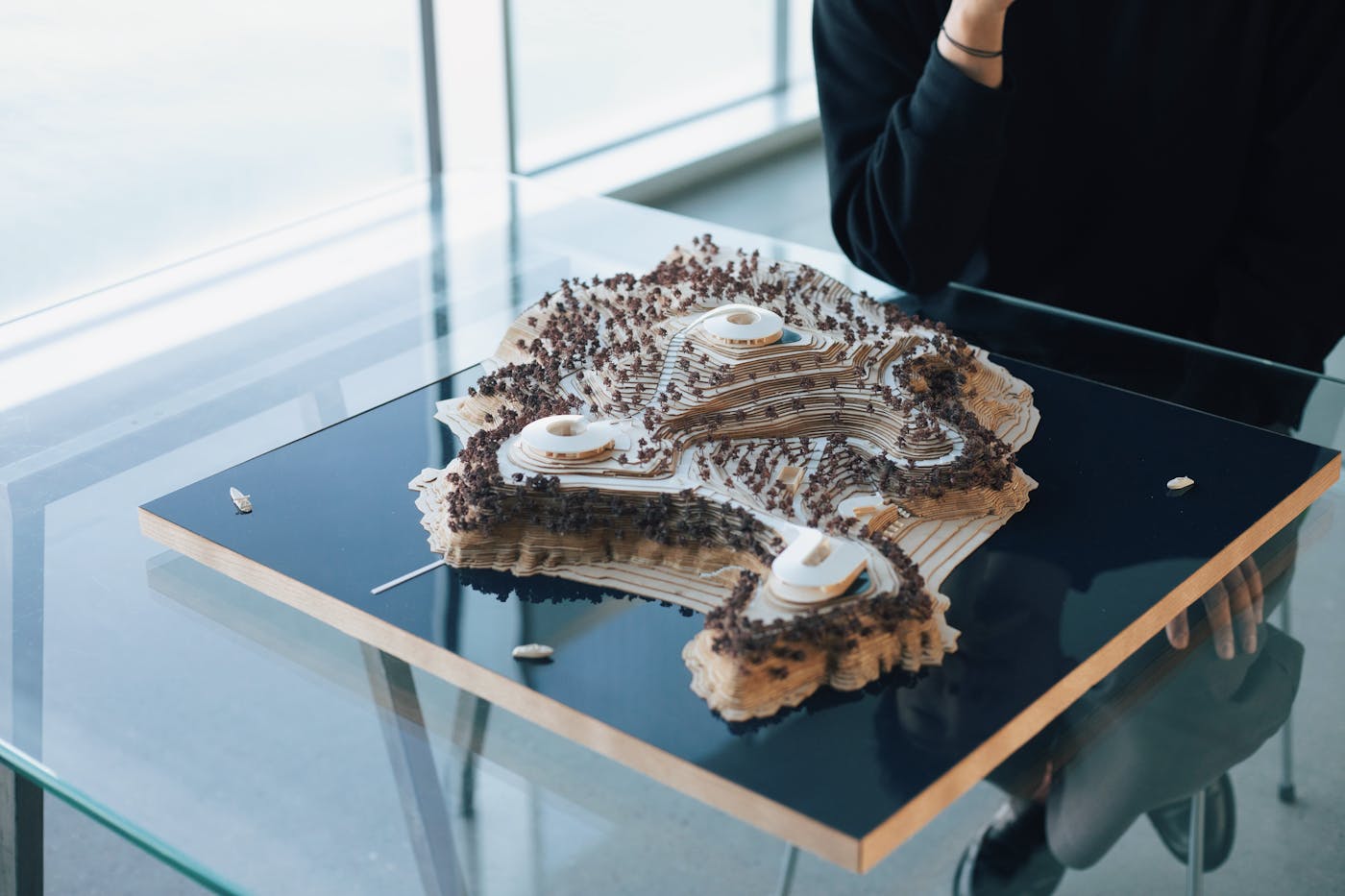
Questions Arising from the Site and a Gift to the Land
So, what questions and answers emerged from the site's conditions on Sagishima, a small remote island bobbing in the Seto Inland Sea? "Sagishima is a beautiful island, rich in nature, but the site had exposed soil in some areas due to an incomplete development project. Before designing, we decided to restore the site to a green state. We always consider how our projects can contribute to the land and the community, calling it a 'gift to the land.' Instead of constructing large buildings that would once again damage the restored nature, we aimed to minimize architectural intervention with the existing infrastructure and contours of the site. From this concept of extreme minimalism, we derived the idea of a continuous line that integrates seamlessly with the infrastructure." Bjarke approved the ribbon-like architectural plan, which minimized land intervention at first sight. Although there have been minor adjustments since then, the basic idea has remained unchanged. "To incorporate the beautiful Setouchi landscape into the architecture, we started with traditional Japanese structures like shrines and single-story buildings that extend horizontally, capturing the borrowed scenery. By adding curves to the buildings, we also created private spaces reminiscent of European courtyards. Bjarke's idea involved varying the angles of the four buildings by 360°, 270°, 180°, and 90°, respectively. This approach not only added an infographic-like character to each building but also perfectly fit the original site, enhancing the strength of the concept."
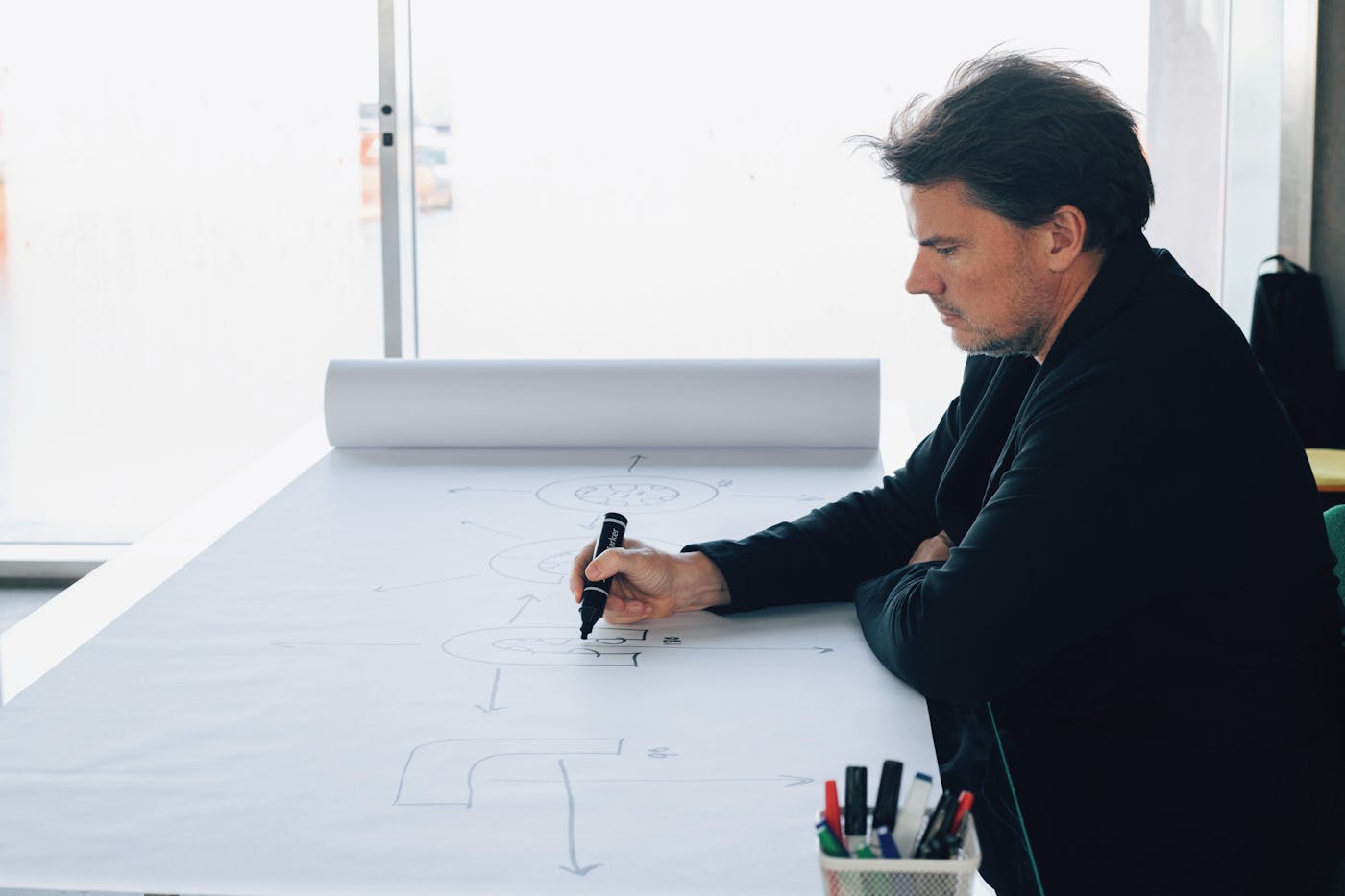
The Inspiring Presence of Bjarke Ingels
So, who exactly is Bjarke Ingels? Ryohei has worked closely with him for the past 13 years, since the organization's early days. He shares his impressions of Bjarke both as a person and as an architect. "First and foremost, he is a genuinely good person. He interacts with everyone equally and without discrimination, from maintenance staff to interns to partners, and all love and admire him. To me, he is like the ultimate version of the older brother I admired as a child, someone you want to imitate and get closer to in any way possible." Many current clients were also captivated by Bjarke at parties and conferences. He is incredibly knowledgeable as an architect, often providing reference materials that are difficult to find even with a thorough search. His frequent travels give him a wealth of firsthand experience. Additionally, his ability to understand and grasp things quickly and profoundly is remarkable, and his presentation skills are so impressive that he could sell sand in the desert, says Ryohei. "Everyone who meets him is charmed. He is highly respected, but not in an intimidating way. It's more about being considerate because he is incredibly busy." Ryohei's enthusiastic account conveys a deep respect for Bjarke as both an architect and a person. The website "Bjarke Ingels Goroku," which Ryohei runs, was also born from his desire to introduce Bjarke's personality, anecdotes, and architectural philosophy to Japan, where there have been few Japanese profiles of him.
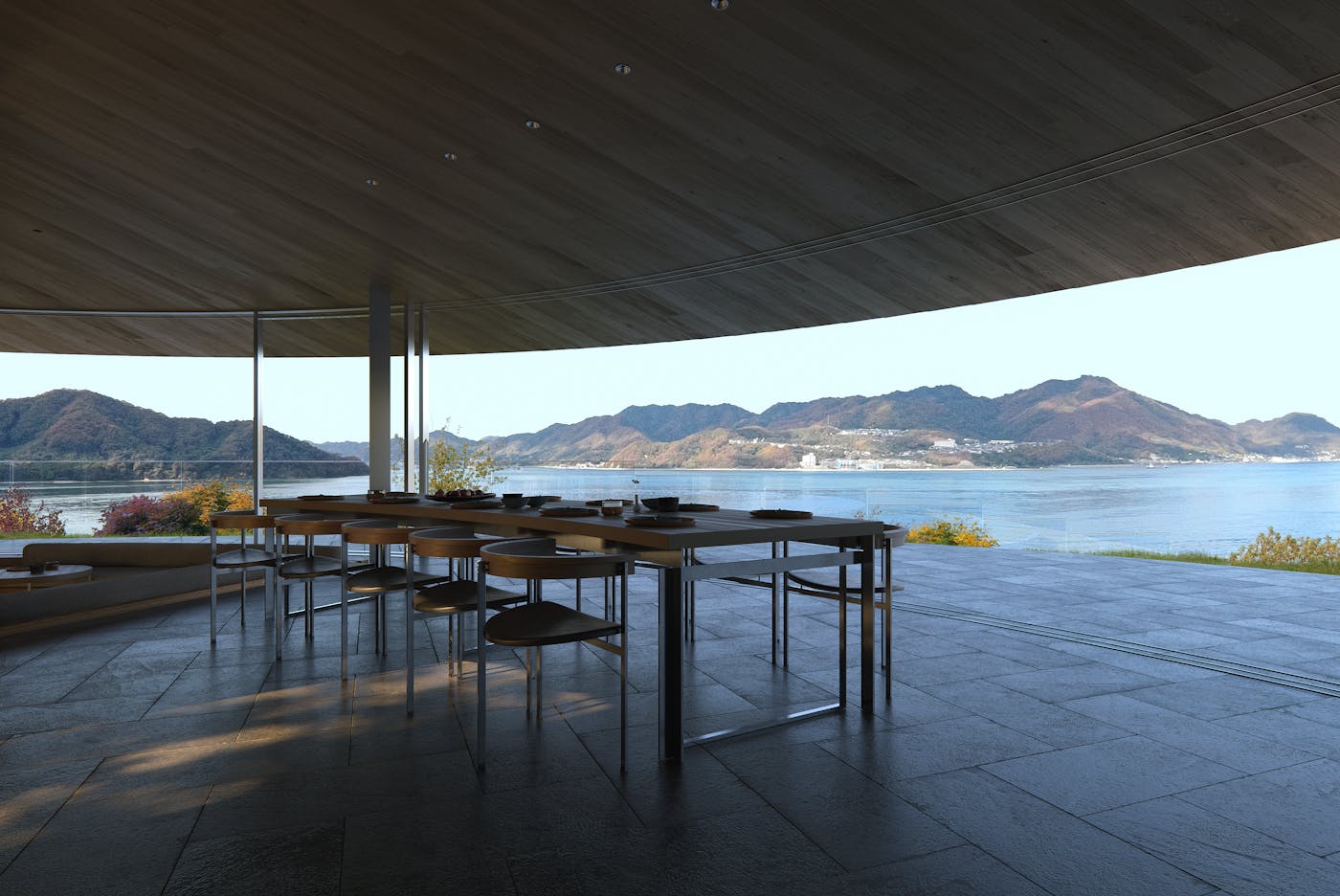
Architecture with Japanese Materials and Japandi Style Interiors
The materials used in constructing NOT A HOTEL SETOUCHI are all sourced from Japan. The floors feature Gensho stone, a traditional material, while the walls are made of rammed earth, a type of earthen wall, and Japanese wood is used for the ceilings. "The slate tiles on the floor are arranged in a pattern inspired by tatami mats, sliding doors reminiscent of shoji seamlessly connect the interior and exterior, and the solar panels resemble traditional tile roofs. We updated these Japanese elements with the latest innovations." In contrast, the furniture incorporates iconic Danish designs such as Poul Kjærholm chairs and Arne Jacobsen lamps, creating a Japandi style that merges Japanese and Scandinavian aesthetics. Among these, Poul Kjærholm's works stand out for their excellent combination of materials and functionality that directly translates into design. For this reason, Kjærholm is Bjarke's favorite designer.
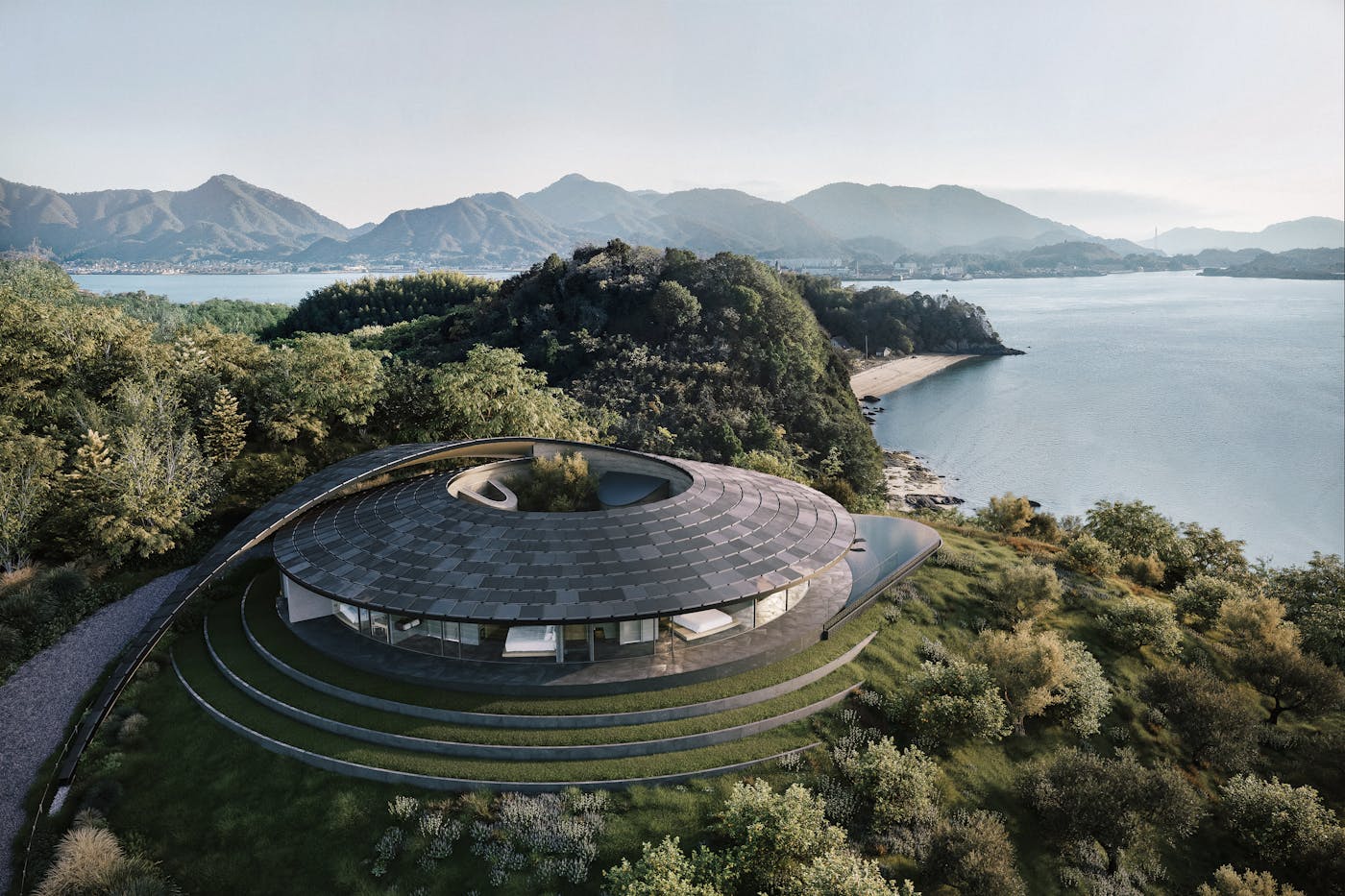
Respecting the Details: A Variety of Japan Firsts
The materials used — earth, glass, and metal — are chosen for their enduring beauty over time, including the effects of aging. Each building incorporates walls made of rammed earth (a traditional construction method) based on Bjarke's idea. These walls, with internal structural support for strength, are constructed using soil excavated from the site, preserving the memory of the land. The glass sliding windows along the building's curves are also unique, featuring curved glass that can open and close. The solar panels are highly aesthetic and unlike any used in Japan before, requiring coordination with importers and agents. While NOT A HOTEL SETOUCHI is set to be BIG's first completed project in Japan, it also incorporates many materials and technologies that are new to Japan. "The construction companies, structural engineers, and all our collaborators have been incredibly proactive. Everyone has worked tirelessly in their respective fields to make this project a reality, and I am immensely grateful. This project embodies the very best that BIG can currently achieve, incorporating everything we wanted to do. There are no compromises or areas where I wish things were different." A detailed booklet that Ryohei created explains the project thoroughly, covering everything from an introduction to BIG, the building's concept, the reasons behind its form on this site, to the rationale for the material selections. This comprehensive explanation, accompanied by numerous diagrams and perspective images, ensures that everyone involved in the construction, from nearby residents to workers without architectural knowledge, can share a sense of purpose and understand their roles in the project. "We didn't want contractors to simply materialize sketches drawn by architects. Instead, we wanted various professionals to understand the concept clearly so they know why they are performing their specific tasks. The goal is for everyone to share the design vision so thoroughly that everyone involved can explain their work to their friends and family!"
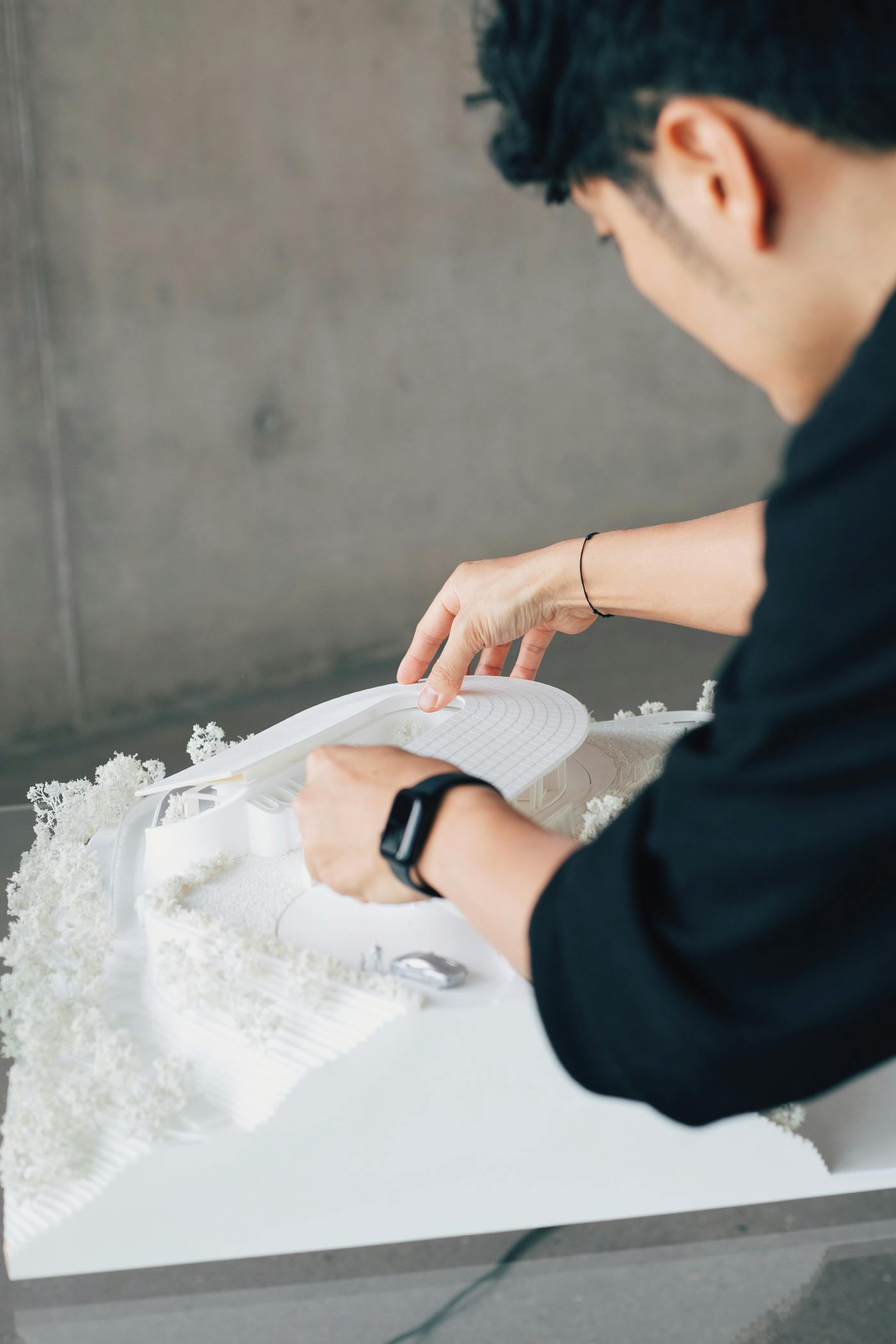
Growing Stronger, the "Final Boss"
NOT A HOTEL and Ryohei have held regular Tuesday meetings for about a year, exchanging ideas and refining the project. "I recently counted, and we created about 3,080 PowerPoint slides over the year. Dividing that by 365 days, it comes to about eight slides a day (laughs). I knew it would be tough at the beginning and that I would have to put in a lot of hard hours at the start to ensure a smoother road later on. However, I didn't need to worry so much because Hamauzu-san and the NOT A HOTEL team responded with incredible energy. We were speaking directly with decision-makers, so things evolved rapidly, and the intensity of our discussions remained high throughout each phase," Ryohei recalls. "Typically, building a house, an office, or a museum doesn't happen often in one's life. But in Hamauzu-san's case, he is always advancing designs with various architects and creators across different projects, so it's like facing the 'Final Boss.' The challenges kept getting tougher, and he wasn't easily satisfied. Hamauzu-san, who loves architecture, possesses knowledge that surpasses many architects. He has extensive experience in hospitality from visiting various hotels and has a perspective as a business leader. In a good way, he was an unprecedented client. His feedback was spot-on, and it often turned out perfectly when we made adjustments based on his advice. While NOT A HOTEL never rejected ideas we genuinely believed in, they were strict in pointing out areas where we had doubts. I have immense trust in them, and having design meetings with such people was enjoyable. I believe Hamauzu-san will leave an unprecedented lasting mark on Japanese architectural history." All the team members, including Bjarke and Ryohei, love Japan architecturally and culturally. The day is approaching when their ideas take shape on the nature-rich island in the Seto Inland Sea. Ryohei's role as a bridge connecting Japan and BIG suggests that more BIG architecture may come to Japan in the future.
STAFF
EDIT・TEXT
TRANSLATION
PHOTO
Sanae Sato
Jeremy Kuhles
Maya Matsuura
